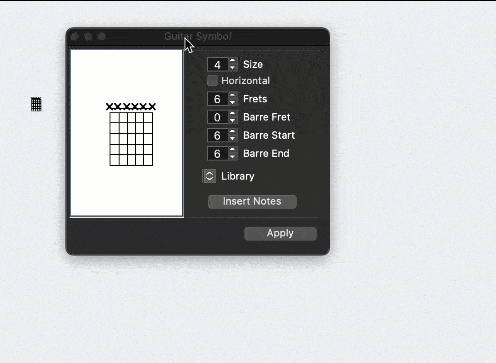
What is a chord map? A chord map shows how chords are connected on the guitar fretboard. A chord map also highlights the bass note, which can influence the overall sound and progression of the chords. So, this guide will help you understand chord maps, improve your playing, and use them for songwriting.
Key Takeaways
- Chord maps visually represent guitar chords and their relationships, aiding navigation and transitions for players of all skill levels.
- Key components of a chord map include root notes, finger placement indicators, and color-coded diagrams that enhance the learning and understanding of music theory.
- Chord maps are essential for songwriting, allowing for intuitive chord-progression creation and experimentation with popular progressions to craft unique compositions.
Introduction to Guitar Chords
Guitar chords are a fundamental aspect of playing the guitar, consisting of three or more notes played simultaneously on the guitar strings to create a harmonious sound. Each guitar chord is typically represented by a chord symbol, which can be broken down into sections such as the root, quality, and type. Understanding these symbols is crucial for playing popular songs and creating music, as chords form the foundation of chord progressions.
Guitar chords can be classified into major chords, minor chords, and other types, each with its unique sound and characteristics. Major chords generally have a bright and happy sound, while minor chords tend to sound more somber and melancholic. Other chord types, such as diminished and augmented chords, add tension and complexity to music.
The guitar neck and fretboard are essential tools for playing different variations of chords. The left hand presses the strings against the frets to produce the desired notes, while the right hand strums or picks the strings. Mastering the various chord shapes and their positions on the fretboard is key to becoming a proficient guitarist.
Music Theory Basics
Music theory is the study of the language and practices used in creating music, including guitar chords and chord progressions. Understanding the basics of music theory is essential for playing and writing music, as it provides the foundation for all musical concepts.
At its core, music theory involves understanding notes, intervals, scales, and chord types. Notes are the building blocks of music, and intervals are the distances between these notes. Scales are sequences of notes that form the basis for melodies and harmonies, while chords are built from these scales and intervals. The root note and quality of a chord determine its type and sound.
Music theory also encompasses key signatures, which indicate the key of a piece of music, as well as tempo and rhythm, which dictate the speed and timing of a song. Familiarity with these concepts is crucial for playing songs and creating music.
Understanding tension and resolution is another important aspect of music theory. Tension is created by certain chords or intervals that sound unstable, while resolution occurs when this tension is resolved by moving to a more stable chord. This interplay between tension and resolution is what makes music interesting and dynamic.
Understanding Chord Maps
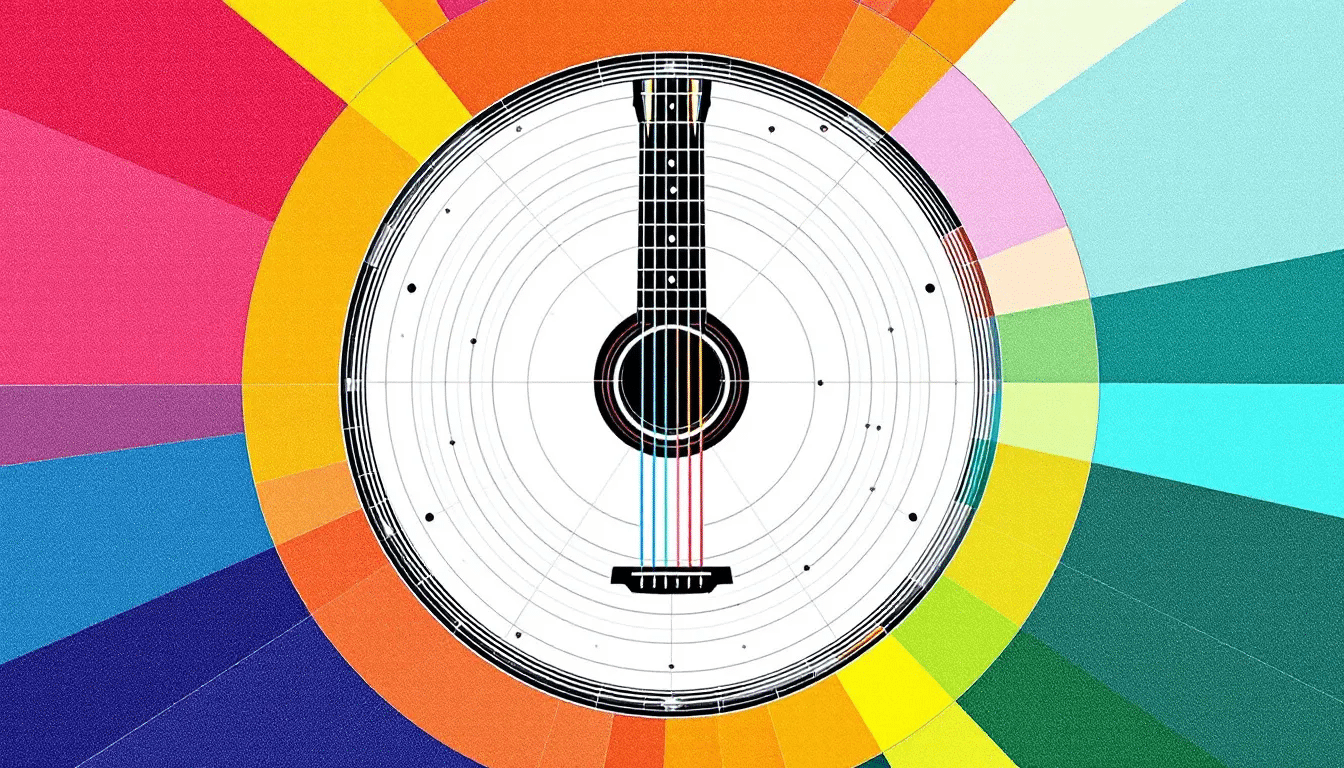
Chord maps are invaluable tools that visually represent the relationships between various guitar chords on the fretboard, making it easier for players to navigate and play. Visualizing these spatial relationships helps guitarists quickly grasp how different chord shapes connect and interact, facilitating smoother transitions and more fluid playing.
The beauty of chord maps lies in their ability to show how chords are interconnected. This interconnectedness means that once you learn a few chord shapes, you can easily see how they transform across the fretboard. This is particularly useful for beginners who are learning new chords and for advanced players looking to explore more complex chord progressions.
Chord maps also help guitarists improve finger placement accuracy and deepen their understanding of music theory as it applies to the guitar. The visual representation of chords helps in memorizing shapes and positions, ultimately leading to a more intuitive and enjoyable playing experience.
Components of a Chord Map
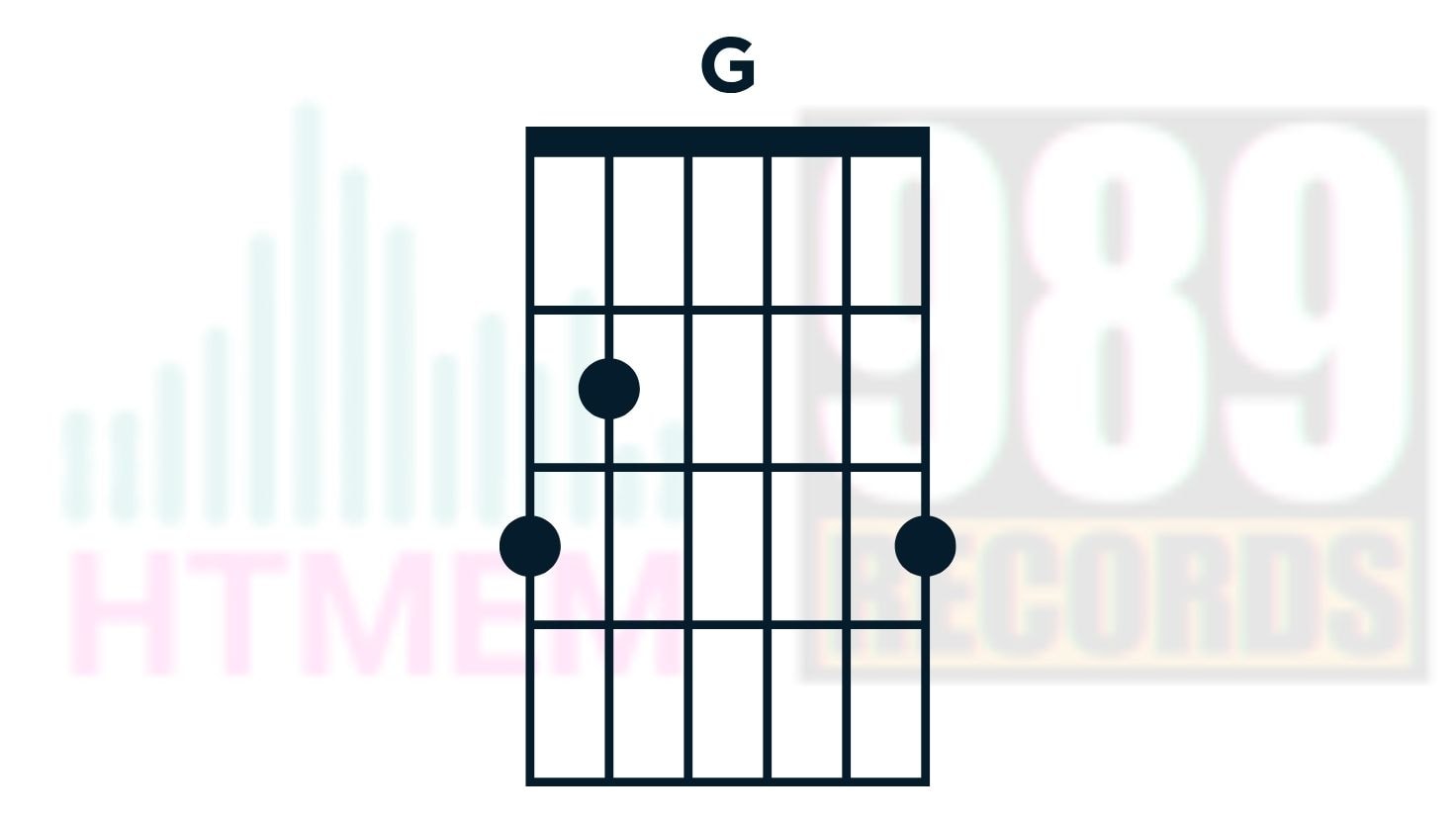
A well-constructed major chord map includes several key components that work together to provide a comprehensive understanding of the guitar fretboard. Each chord is often represented by a letter, indicating the root note and its quality. One of the most fundamental components is the root note (in the image above, G is the root note), which defines the chord’s identity and serves as the reference point for measuring intervals.
Finger numbers and chord tone indicators are also essential elements of a chord map. These indicators help players place their fingers accurately on the fretboard, ensuring correct chord formation and sound production. Additionally, using colors in chord diagrams can significantly enhance the learning experience by making it easier to visualize and remember different chord shapes, including finger number indicators.
Including scale alongside chords in your chord map offers a deeper insight into how low chords interact in different musical contexts. This fun, comprehensive approach helps guitarists choose the bigger picture, facilitating the creation of cohesive and harmonious chord progressions.
Online tools like ChordFinder can quickly identify and visualize piano chords, allowing users to use click and further enhance the learning process.
How to Read a Guitar Chord Map
Reading a guitar chord map might seem daunting at first, but with a little practice, it becomes second nature. Chord diagrams typically consist of a box-like grid representing the guitar fretboard, with dots indicating where to place your fingers. This grid corresponds to the strings and frets of the guitar, providing a clear visual guide for finger placement.
Symbols play a crucial role in chord maps. An ‘X’ above a string signifies that the string should not be played, while an ‘O’ indicates an open string that should be played without pressing down on any frets. The chord name is usually displayed above the diagrams, providing information about the chord type and any variations, such as ‘m’ for minor or ‘7’ for dominant seventh. This notation helps musicians understand the structure of the chord.
Chords are written using specific notations that indicate their quality and extensions, making it easier for musicians to understand and play them.
Familiarizing yourself with these symbols and practicing the interpretation of different chord diagrams is key to reading a chord map effectively. With practice, you’ll quickly identify and play various chords, enhancing your overall guitar-playing experience.
Creating Your Own Chord Map
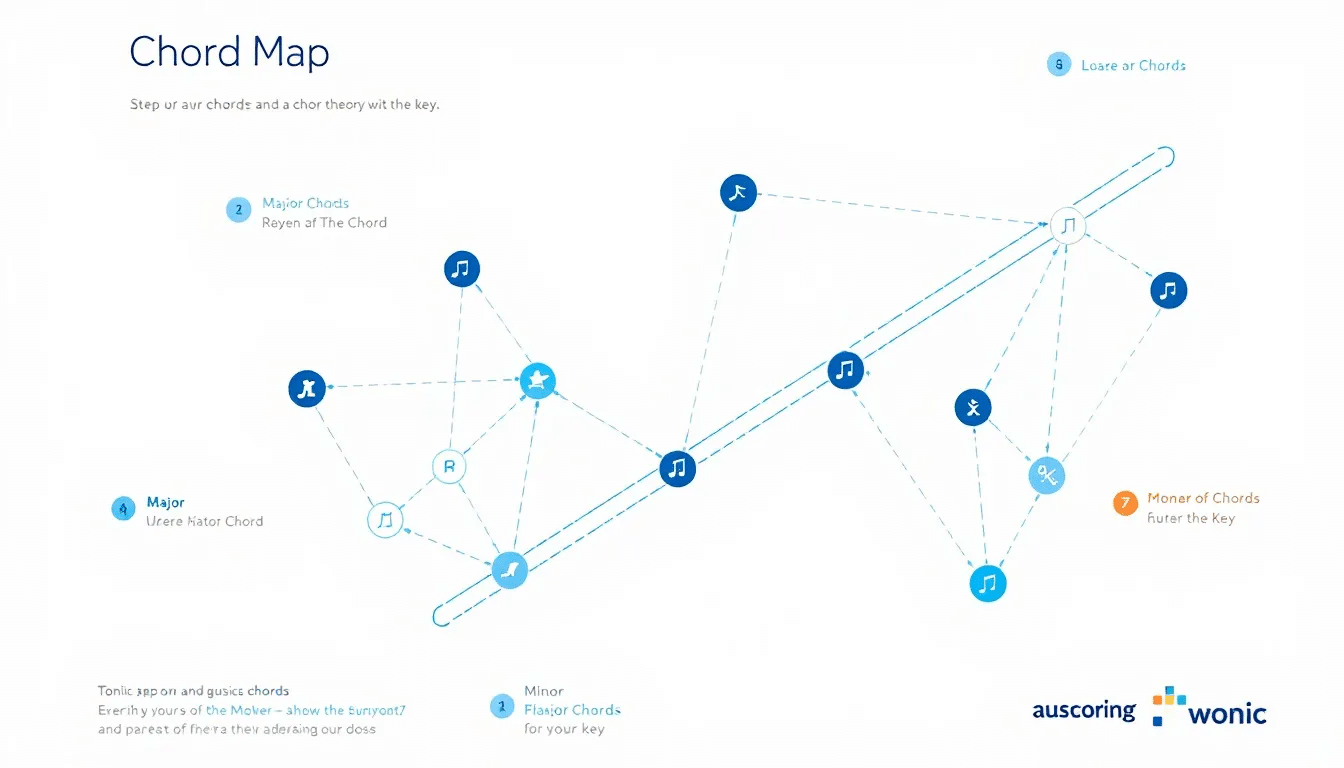
Creating your own chord map can be a highly rewarding process, allowing you to tailor the map to your specific needs and preferences. Many guitarists utilize established systems like the CAGED system, designed to simplify the learning process. This system helps players understand how chord shapes move up and down the fretboard, making it easier to learn new chords and transitions.
There are numerous online fretboard diagram builders available that enable you to create customized chord diagrams in various formats. These tools often come with features that allow you to add finger numbers, chord tones, and other helpful indicators, making your chord map as detailed and informative as possible.
On the other hand, if you want to use your DAW to create chord progressions, cubase has got you covered. Check this out.e
Start by practicing chord transitions, which significantly improves fluency.
An effective method involves playing two chords back-to-back repeatedly, gradually increasing speed as you continue to find a way to become more comfortable with the transitions.
Using different difficulty settings in your chord charts tailors practice sessions to your skill level, ensuring steady progress.
Using Chord Maps for Songwriting

Chord maps are useful not only for learning and practicing guitar chords but also play a significant role in songwriting. Utilizing the diatonic system allows songwriters to create chord progressions that naturally fit within a chosen key, enhancing musical cohesion. This system identifies which chords work well together, making songwriting more intuitive and enjoyable.
One of the most frequently used chord progressions in various music styles is the I-IV-V progression (also known as the standard blues progression).
NOTE THAT: the upper case indicates major chords, and, on the opposite, lower case indicates minor chords)
This progression forms the backbone of countless popular songs and is a staple in songwriting. Similarly, the I-V-vi-IV progression is commonly found in many hit songs, providing a catchy and memorable sound.
The following audio chord progression examples are based on the assumption that the root note is C.
For emotional ballads, the vi-IV-I-V progression is often utilized, creating a poignant and moving atmosphere.
Incorporating augmented chords (notated as ‘aug’) can add tension and complexity to your compositions.
Chord maps assist songwriters in experimenting with altering standard progressions to create fresh and innovative sounds. Transforming the order of chords or incorporating diminished chords to create tension helps musicians craft unique compositions that stand out. Chord maps also help identify how scales and arpeggios relate to specific chords, enhancing a guitarist’s improvisational skills and overall musicality.
Guitar Chord Techniques
Guitar chord techniques involve the physical act of playing chords on the guitar, including finger placement and hand positioning. The left hand is used to press the strings against the fretboard, while the right hand is used to strum or pick the strings. Proper technique is essential for producing clean, accurate sounds and avoiding strain or injury.
Different chord types require varying finger placements and hand positions. Some chords, like open chords, are relatively simple and involve only a few fingers on the fretboard. Others, like barre chords, require the index finger to press down multiple strings across a single fret, which can be challenging for beginners.
Barre chords are a common technique used in many popular songs. They allow guitarists to play chords in different positions on the fretboard, providing more flexibility and variety in their playing. Practicing barre chords can help improve finger strength and dexterity.
Practicing chord changes and transitions is crucial for developing fluency and smoothness in playing. Repeatedly playing two chords back-to-back and gradually increasing speed can help build muscle memory and confidence. Using different difficulty settings in chord charts can tailor practice sessions to your skill level, ensuring steady progress.
Advanced Techniques with Chord Maps
For those looking to delve deeper into music theory and advanced guitar playing, chord maps offer a wealth of possibilities. Understanding modulation through chord maps enables musicians to create tension and resolution effectively, adding depth and complexity to their music. This technique involves shifting the key center, which can lead to unexpected and exciting musical journeys.
Understanding the role of the lowest note in a chord can significantly impact the overall sound and progression of your music.
Combining different chord progressions within a song leads to richer and more varied song structures. Chord maps can assist in visualizing how these progressions interact, making it easier to experiment and find combinations that work well together. Experimenting with chord duration within a map can significantly change the feel and groove of a song, offering unique rhythmic opportunities. Do you know that cubase can help you create chord progression with ease? Check this out. Exploring these advanced techniques allows guitarists to push the boundaries of their creativity and achieve a deeper understanding of how music theory applies to the fretboard, guitar strings, and guitar neck. This knowledge can lead to more sophisticated and compelling compositions, setting them apart as skilled and innovative musicians.
Popular Chord Progressions Mapped Out
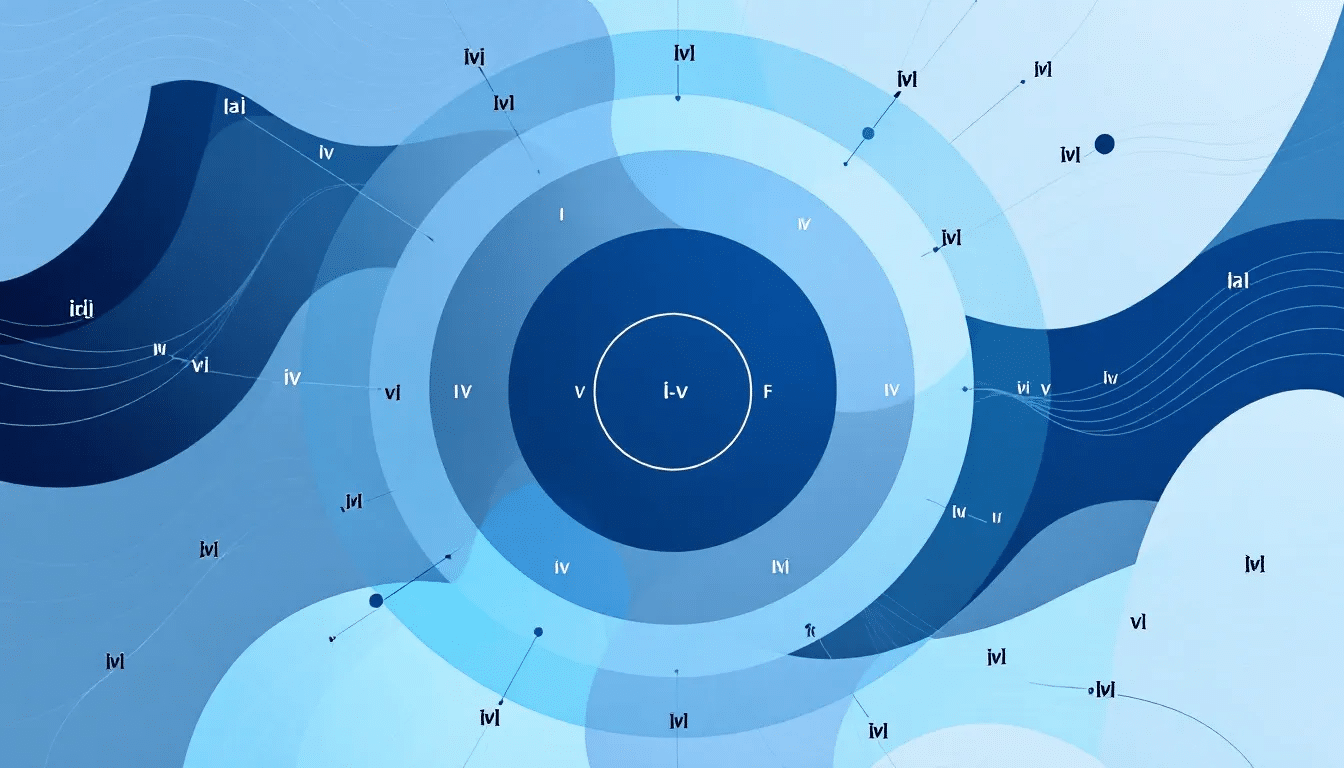
Popular chord progressions form the backbone of many memorable songs, and chord maps help visualize and organize these progressions. Common progressions include the:
- I-IV-V, I-V-vi-IV and the
- vi-IV-I-V
provide a solid foundation for songwriting, shaping the structure and feel of a song. These popular chord progressions are essential for both beginners and advanced players, offering a starting point for musical exploration. This list of progressions can guide your songwriting journey.
The thickest string on the guitar, often the low E string, plays a crucial role in defining the bass notes of these progressions.
Chord maps can visually represent these common progressions, allowing musicians to understand the relationship between chords and how they flow together. This visual representation makes it easier to experiment with different musical ideas and find the progression that best fits the desired mood and style of the song.
Experimenting with different variations of chord progressions through chord maps can lead to unique and innovative compositions. Trying out various combinations and altering standard progressions helps songwriters discover new sounds and create distinctive music. Did You Know That: In Cubase, creating guitar tablature is a breeze with the score editor?
Practicing and Improvising
Practicing guitar chords regularly is essential for building finger strength, improving technique, and increasing musical knowledge. Start by practicing basic chords and gradually move on to more complex ones, focusing on smooth transitions and clean playing. Consistent practice helps develop muscle memory and makes playing more intuitive.
Improvising with guitar chords involves creating music on the spot, using chord progressions and scales as a foundation. This skill allows musicians to express themselves creatively and develop their unique style. Listening to and playing along with recordings can help develop improvisational skills and increase familiarity with different chord progressions.
Experimenting with different chord variations and techniques can help musicians create unique sounds and styles. Trying out various combinations and altering standard progressions can lead to new and innovative compositions. Embrace the process of exploration and let your creativity guide you.
Common Mistakes to Avoid
One of the most common mistakes when playing guitar chords is incorrect finger placement, which can result in muted or buzzing strings. Ensuring that your fingers are pressing down firmly and accurately on the strings is crucial for producing clear, clean sounds.
Failing to press the strings firmly enough against the fretboard can also cause poor sound quality and intonation issues. Make sure to apply enough pressure to avoid any unwanted buzzing or muted notes.
Not using the correct chord type or variation can disrupt the overall sound and feel of a song. It’s essential to choose the right chords for the music you’re playing to maintain the intended mood and harmony.
Neglecting to practice regularly can lead to stagnation and a lack of progress. Consistent practice is key to improving your playing technique and musical knowledge. Set aside dedicated practice time to work on your chords and transitions.
Not using resources such as chord diagrams, tutorials, and online tools can make it more challenging to learn and master guitar chords. Take advantage of these resources to improve your playing skills and gain a deeper understanding of music theory.
Resources and Tools for Chord Mapping
There are numerous online resources and tools available for creating and sharing chord maps. Online tools make it easy to create custom guitar chord diagrams tailored to your preferences. These tools usually include features like color-coding, finger numbers, and chord tones, making the creation process straightforward and effective. These tools often include features that allow you to see how chords are written, making it easier to understand and use them in your music.
Sharing your custom chord maps online facilitates collaboration and feedback from other musicians. Platforms that allow sharing and collaboration are invaluable for gaining new insights and improving your chord maps. Exchanging ideas and techniques allows musicians to learn from each other and enhance their overall understanding of chord mapping.
Recommended tools for chord mapping include various online chord analyzers and diagram builders. These resources offer a user-friendly interface for creating detailed and accurate chord maps, aiding in visualizing and understanding the fretboard. Whether you’re a beginner or an experienced player, these tools can significantly enhance your guitar playing and songwriting experience.
Summary
Mastering the fretboard with the help of guitar chord maps can transform your playing experience, making it more intuitive and enjoyable. From understanding basic components to applying advanced techniques, chord maps provide a comprehensive guide for navigating the guitar fretboard. By incorporating these tools into your practice and songwriting, you can unlock new creative possibilities and achieve a deeper understanding of music theory.
As you continue to explore and experiment with chord maps, remember that the journey of mastering the guitar is a continuous and rewarding process. Embrace the learning experience, and let the ultimate guitar chord map chart guide you towards becoming a more skilled and innovative musician.
Frequently Asked Questions
What is a guitar chord map?
A guitar chord map serves as a visual guide that illustrates the relationships between different chords on the fretboard, facilitating easier navigation and finger placement for players. This tool is essential for mastering chord transitions effectively. A chord map also highlights the bass note, which can influence the overall sound and progression of the chords.
How can I create my own chord map?
To create your own chord map, utilize online fretboard diagram builders that let you customize chord diagrams with finger numbers and tones. This personalized approach ensures your chord map meets your specific needs.
Are chord maps useful for songwriting?
Chord maps are indeed valuable for songwriting as they provide a visual representation of chord progressions, fostering creativity and ensuring musical cohesion. Utilizing them can greatly enhance your songwriting process.
Incorporating augmented chords (notated as ‘aug’) can add tension and complexity to your compositions.
What are some common chord progressions I should know?
Familiarizing yourself with common chord progressions like I-IV-V, I-V-vi-IV, and vi-IV-I-V will enhance your songwriting skills across different music styles. These progressions serve as a fundamental framework in composition. Understanding the role of the lowest note in a chord can significantly impact the overall sound and progression of your music.
Can chord maps help with advanced guitar techniques?
Yes, chord maps can significantly enhance advanced guitar techniques by aiding in modulation, combining progressions, and experimenting with chord duration for more sophisticated compositions.


